Often regarded as a hidden gem in the Himalayan range of Nepal, Mera Peak rises a whopping 6,476 meters (21,246 feet) above sea level. An iconic Nepal trekking in the heart of the country, it attracts fewer trekkers than the well-trodden paths up major peaks like Mount Everest or Annapurna. It makes this place a perfect place for a little explorer, in the middle of the Himalayas to have a quiet, yet adventurous experience. With stunning views, a rewarding summit, and a challenging but achievable climb, Mera Peak is a trekker’s dream and mountaineers alike.
Mera Peak altitude Going To Mera Peak starts from Kathmandu, the Capital of Nepal, where put your itinerary together and climb. The next leg, from Kathmandu, is a thrilling flight to Lukla, the gateway to Nepal’s mountain realms. The trek begins officially from Lukla, navigating through lush forests along with traditional Sherpa villages and beautiful valleys. The trek provides spectacular views of Everest, Makalu, and Cho Oyu, among other peaks, a constant reminder of how awe-inspiring the world can be.
Perhaps the most attractive thing about Mera Peak is that you do not need advanced technical climbing skills to tackle this mountain, as it is achievable for those with basic mountaineering experience. But it still offers a taste of high-altitude mountaineering, demanding the use of crampons, ice axes, and ropes, especially as you near the summit. Climbing here is non-technical, but it requires a high degree of physical fitness, willpower, and altitude acclimatization.
Acclimatization in the success of the expedition. As trekkers move up, their bodies slowly acclimatize to the thinner air. This acclimatization process is essential for minimizing the risks of altitude sickness, a common struggle in high-altitude climbs. For the trekking route, there are planned rest days where climbers go to a higher elevation but spend a few days, allowing their bodies time to acclimatize. The speed of the trek is slow, allowing climbers to keep cool without too much effort.
Not only the trek but also the landscape is the beauty of Mera Peak. 【As climbers ascend, the surrounding landscape grows ever more dramatic.】 There is something magical about the untouched slopes of white, the ragged mountains, and the deep blue skies. On the summit, climbers are rewarded with 360-degree views of the world’s highest peaks, including Mount Everest, Makalu, and Kangchenjunga. The view from the top is nothing less than breathtaking, a moment that mountain climbers remember for their entire life.
The hike is the best of the physically demanding and you will find no satisfaction when you reach the top. Mera Peak is sometimes viewed as an entry-level climb for climbers building up to higher, more technical mountains. It also sharpens one’s mountaineering skills and offers an intimate encounter with the stunning Himalayas. The path crosses remote and culturally diverse Sherpa villages where hikers may contact the locals and learn about their culture while witnessing their hardship and hospitality.
The true beauty of Mera Peak is that, unlike Nepal’s more overcrowded trekking regions, you will find solitude here and an untouched feeling of the Himalayas. Less commercialized than many other climbs, the trek allows climbers to engage with the region’s natural beauty without being overwhelmed by throngs of other climbers. This peace and quiet is what makes Mera Peak a diamond in the Himalayan rough.) Mera Peak: A Unique Experience in Nepal For adventure-seeking, Nepal Mera Peak is the best of both worlds! It’s an experience that not only leaves its mark on you physically but also emotionally and is a celebration of the beauty of Nepal’s extraordinary mountain scenery.
Introduction to Mera Peak
Mera Peak difficulty Mera Peak (6,476 meters / 21,246 feet) is among Nepal’s tallest trekking peaks, situated in the Khumbu region of the Himalayas. While not receiving quite the same worldwide attention as Mount Everest, Mera Peak is a unique and accessible experience for a mountaineer. It is classified as a non-technical peak, which means that anyone with some mountaineering experience can reach the summit and this makes it a great climb for those wanting to test themselves in a high altitude environment. The peak of Mera Peak gives panoramic views of the many surrounding peaks, notably Everest, Makalu, and Cho Oyu, making for an unforgettable experience for every climber! Another reason to choose this is you have a physically demanding and mentally rewarding journey where a rigorous trek over varying terrain ends with a stunning summit – coupled with challenges to your high-altitude mountaineering knowledge.
What Makes Mera Peak a Hidden Gem?
With its towering height, Mera Peak is considered one of the hidden gems of the Himalayas as it is less crowded and more accessible than other world-famous peaks like Mount Everest or Annapurna. This comparative peace means climbers can enjoy the primal, unspoiled beauty of the Himalayas without the heavy foot traffic seen on other trekking peaks. Although it demands some technique, Mera Peak provides the opportunity to ascend one of the attainable high Himalayan peaks, without the need for the technical skills essential for the higher, more demanding mountains. The trek also boasts breathtaking views of some of the world’s highest mountain peaks, making it a truly once-in-a-lifetime opportunity. If you enjoy adventure but are looking to get away from the crowds without giving up the experience of climbing a big peak, Mera Peak might just be the mountain for you, with a unique sense of adventure and solitude.
Mera Peak Location and Geography
Mera Peak Package is in the Khumbu region of Nepal in Sagarmatha National Park, known for its incredible natural beauty. The summit itself is located Southeast of Everest and you will be able to see the major Himalayan peaks including Makalu, Lhotse, Cho Oyu, and the rest. The region’s geography consists of rocky terrain, many glaciers, alpine meadows, and snow-covered ridgelines. From the lush, lower-altitude forests to the more alpine terrain at higher altitudes, the route to Mera Peak has a variety of terrains. The summit of this peak offers one of the best panoramic views of the Everest massif, and numerous other prominent Himalayan peaks, so it is a popular objective for those wishing to experience the majesty of the region without the technical difficulties of the Everest itself.
History and First Ascent of Mera Peak
The first successful ascent of Mera Peak was achieved in 1953 by a British expedition led by Colonel Jim Edwards. Mera Peak was, at the time, a part of the overall exploration of the Himalayas, and its ascent was considered a milestone. Mera Peak’s summit was a truly significant achievement in that era despite not attaining fame like the first ascent of Everest. As such, in recent years it has evolved into a popular peak for mountaineers, with relatively non-technical and straightforward routes. However, it wasn’t until the 1980s that it started to draw more trekkers and climbers eager for a taste of high-altitude mountaineering. Mera Peak is still a major player in Nepal’s offerings of trekking peaks and draws adventurers who want to test themselves in the stunning Himalayas.
Mera Peak vs. Other Himalayan Peaks
Although Mera Peak is definitely one of Nepal’s tallest trekking peaks, it is different from some of the more technical peaks that are found in the area. Unlike Mount Everest or Annapurna, which demand extensive technical expertise and are often undertaken by seasoned mountaineers, Mera Peak is seen as more within the reach of climbers with basic mountaineering skills. Mera Peak presents the chance to summit a massive Himalayan peak without needing technical climbing expertise like on Everest or Lhotse. The ascent involves basic techniques like walking with crampons and the use of an ice axe, but it doesn’t require the high-level technical skills that Everest or Annapurna require. From an accessibility standpoint, there are far fewer climbers who attempt Mera Peak making it a great choice for someone looking for a more peaceful and immersive adventure in the Himalayan range. It’s a great option for people wanting to gain experience before going onto harder peaks in Nepal.
Mera Peaks Trekking & Climbing Routes
The trekking and climbing routes to Mera Peak usually start from the town of Lukla, which is a hub for treks in the Khumbu region. Trekking from Lukla, trekkers walk through villages such as Chhutang, Paiya, and Nashing Dingma, up a steadily climbing trail that provides stunning views of the surrounding mountains. Higher up, the terrain transforms from forests to alpine grassland and rocky outcrops. Conditions worsen in the last mile and a half as altitude starts to affect you. Acclimatization is key to maximizing the ability to adjust to high altitude, and the journey includes planned rest days along the route. Climbers will typically continue on from Mera Peak Base Camp to High Camp before the summit push. While there are technical sections climbers will have to use crampons, ice axes, and ropes for climbing within icy terrain and steep slopes on the way to the summit. The path is known to be non-technical, but attention and excursion are still needed. Such a climb can be arduous, especially at this high altitude, but the reward of reaching the peak and seeing the amazing panorama makes it all worthwhile.
Best Time to Visit Mera Peak
Mera Peak climbing tips Mera Peak is best visited during Nepal’s pre-monsoon (spring) and post-monsoon (autumn) seasons, between March to May and September to November. These months provide the clearest weather, steady temperatures, and the best visibility, making them prime time for trekking and climbing. Yet the skies are generally clear during these two seasons, allowing trekkers to take in unobstructed views of the surrounding Himalayan peaks, including Mount Everest, Makalu, and Cho Oyu. And it is still relatively mild at this elevation compared to the stinging cold of winter. There are fewer climbers during the spring season as well, which makes the experience more peaceful. On the flip side, avoid the monsoon season (June to August) because heavy rain will make the trails slippery and dangerous. Most climbers avoid December to February because the very cold temperatures and the potential for snowstorms make climbing work unmanageable. Thus, plan your Mera Peak journey in spring or autumn for the most worthwhile conditions.
The Journey to Mera Peak Base Camp
Mera Peak Base Camp Trek begins in Kathmandu where climbers would normally take a flight to Lukla: a small town at 2,860 meters (9,383 feet). The trek from Lukla follows a well-trodden path used by trekkers in the Khumbu region. It takes you through lush forests of rhododendrons, and pine trees and Sherpa villages like Chhutang and Paiya, with great views of the mountains throughout the route. The path you follow has lots of rocky sections and the trees fade from the steep mountainsides, opening to expansive alpine meadows. The walk gives trekkers a chance to feel the pulse of the Khumbu while enjoying views of Mount Everest, Makalu, and other peaks. The journey can last for days, and climbers are told to take it slow during that time to help with acclimatization at higher altitudes. The last part leading to Base Camp is probably the most adventurous and challenging one; almost crossing glaciers and moraine. Base Camp at Mera Peak is located on the hillside, at 5,300 meters (17,388 feet) above sea level, which is a significant milestone in your journey, from here climbers will start their way toward High Camp before they attempt to summit.
Your Body: Acclimatization and Health Considerations
One of the key features of any successful expedition to Mera Peak is micro acclimatization. The higher one climbs, the thinner the air becomes and the less oxygen is available, and without a properly designed acclimatization plan, altitude sickness can set in. It is important to incorporate regular rest days, particularly at critical spots such as Namche Bazaar and Mera Peak Base Camp, to give the body time to adapt to the prevailing influence. Climbers should also observe the “climb high, sleep low” rule — going higher during the day and returning to a lower elevation to sleep each night. To avoid altitude sickness, hydration, balanced nutrition and adequate rest are essential. Some early signs to look out for include headaches, dizziness, nausea, and fatigue. If such symptoms do not improve or become more severe, then it is recommended that the person make a descent to a lower elevation. The climb is taken slowly and every effort is made during the climb to acclimatize your body to the altitude and promote good health on the trek. Ultimately, your own body knows best, and following the leading of your well-informed guide will make for a safe and successful summit.
Summit Day on Mera Peak: The Final Push
Summit day on Mera Peak Cost is the final stage of a long trek. Most climbers begin their summit attempt in the early morning, usually around 2 or 3 a.m., to make use of the colder, more stable conditions before the wind rises later in the day. Climbing the final approach to the summit requires snow and ice traverses, when crampons, ice axes, and ropes are necessary for protection. Climbers need to keep to a slow, steady pace to save energy, as the altitude will soon make it hard to breathe, and fatigue descends quickly. Eager to cross the last wall, a chiseled statistic that sets the tone for that climb, climbers are gifted one of the most sublime panoramic views of the Himalayan range — including Mount Everest, Makalu, Lhotse, and Cho Oyu — from the top. Reaching the top can be an emotional moment, as it marks the end of months of preparation and the resolution of countless hardships. Once climbers have enjoyed the views and taken the requisite photos, they’ll begin to descend safely and efficiently.
Key Cultural Insights from the Regional Context of Mera Peak
Mera Peak Trek is located in an area rich in Sherpa culture and traditions. This means that as you cross the Khumbu Valley you will pass beautiful settlements like Chhutang, busy Paiya, and Namche Bazaar, where Sherpa people live and work. These communities are characterized by hospitality, resilience, and their long-standing bond with the mountains. For those hoping to summit Mera Peak, the Sherpas have decades of experience guiding climbers and mountaineers up various routes through the Himalayas, so their knowledge proves invaluable. Trekkers pass by Buddhist monasteries along the way where monks meditate and bless safe passage. This is an area famous for colorful prayer flags, stone stupas, and the famous Tengboche Monastery itself. While trekkers walk past the Sherpa villages, they will also notice the unique architecture of Sherpa homes that are designed to withstand the harsh mountain environment. Cultural immersion is an important aspect of the trip and offers insight into the people who live in those mountains and how mountains shape their lives.
Your Ultimate Guide to Mera Peak, the Ultimate Adventurer’s Bucket List
Mera Peak route Mera Peak It is perhaps the most accessible of the Himalayas ‘high’ peaks, making it ideal for mountaineers and trekkers who want to test themselves. Located in the beautiful Khumbu region of Nepal, and featuring incredible views, a relatively easy climb, and the chance to climb a peak in the Himalayas without needing technical climbing skills, Mera Peak is the sweet spot for adventure, challenge, and accomplishment. In contrast to more popular climbs like Everest, Mera Peak gives you the opportunity to enjoy the ruggedness of Nepal’s mountains without tons of other climbers. It also grants genuine cultural insight, meeting local Sherpa communities and visiting Buddhist monasteries. In addition to that the summit also gives climbers unrivaled panoramic views of some of the tallest peaks on the planet. Be it an aspiring mountaineer, a seasoned adventurer or a curious traveler wanting to experience the imposing Himalayan mountains, there are surely many a reason to have Mera Peak at the top of your bucket list. It combines the thrill of mountaineering with the magic of Nepal’s natural and cultural beauty, making it a bucket-list experience.

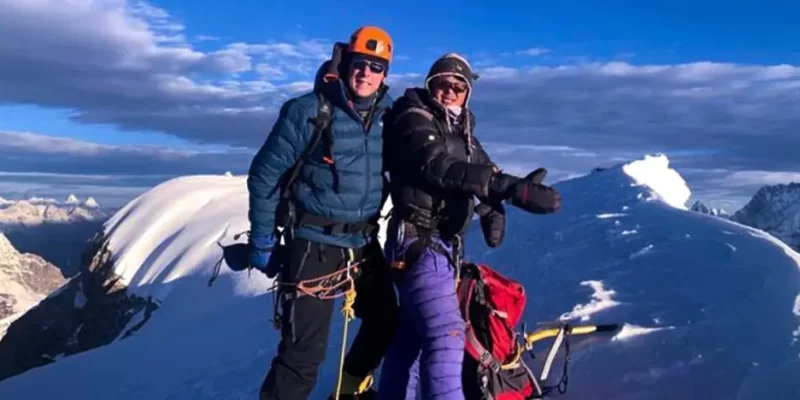


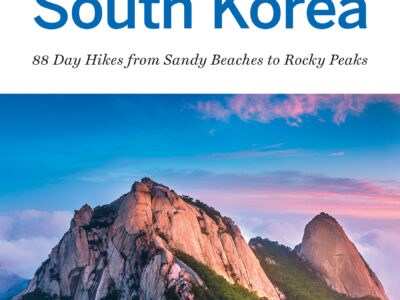
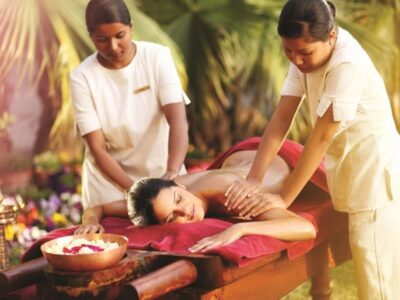

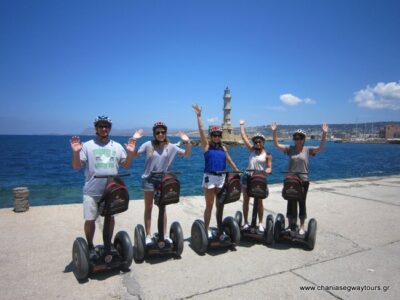


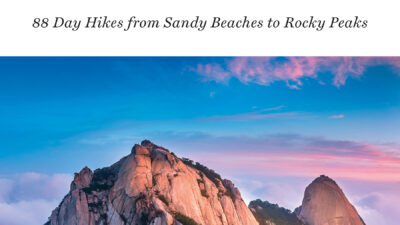
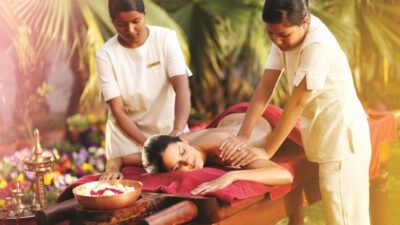
Comments